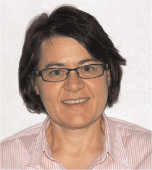Direct electric heating: an environmentally friendly flow-assurance tool
Ingebjørg LienWärtsilä Norway.
The APPEA Journal 53(2) 448-448 https://doi.org/10.1071/AJ12059
Published: 2013
Abstract
In subsea flowlines, water in the line can form an ice-like structure called a hydrate plug. Wax appearance in flowlines also is a common flow assurance issue. Hydrate and wax appearance can reduce or stop production for weeks. Preventing hydrate and wax in pipelines is a major concern for the oil and gas industry.
Direct electric heating (DEH) is a modern and environmentally friendly flow-assurance tool that can reduce capital expenditures (CAPEX) and operating expenditures (OPEX) in field development, reduce the probability of pollution, and reduce handling of toxic disposals as a result of traditional chemical flow assurance methods. DEH is based on using the pipeline as part of the electrical circuit, generating losses in the steel pipe to keep the pipeline and its content above the critical temperatures. Use of DEHs also increases the efficiency at the process plant after planned or unplanned production stops. For marginal fields and fields with heavy or waxy oil, DEH is a flow-assurance method that can enable these fields to be developed profitably.
DEH is now a mature technology used for 13–14 years on the Norwegian continental shelf and technology implemented and used in West Africa recently. How successful this technology has been can be summarised by the Tyrihans field where Statoil quoted that they—on this project alone—saved about $USD175 million by implementing DEH.
Wärtsilä has been part of the DEH development in Norway since the 90s, and undertakes design and supply of the complete topside power package in addition to electric and optical protection specially developed for DEH systems.

Ingebjørg Lien graduated from The Norwegian Institute of Technology (NTH) in 1994 with an MSc (electrical engineering). Previously, she worked for The Norwegian Institute of Technology (NTH) and with BKK, a Norwegian power company. In the past 12 years, she worked in the marine and offshore industry in Aker Kvaerner: seven of those years in Wärtsilä Norway. She has experience in power-systems analysis; concept development for offshore, onshore, and marine power systems; design and delivery of topside DEH systems; power quality; project engineering; commissioning; and, service activities. She has been working with DEH systems during the past 10 years and full time with Direct Electric Heating during the past five years. |


